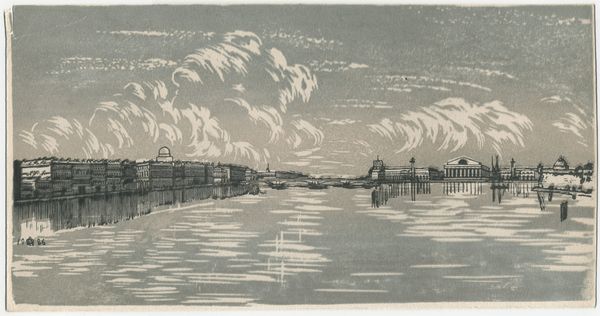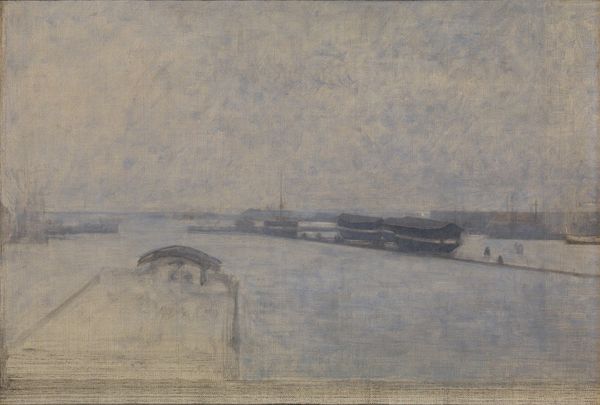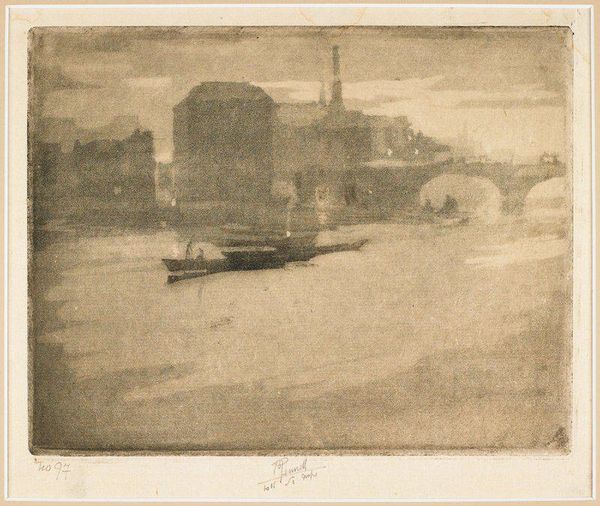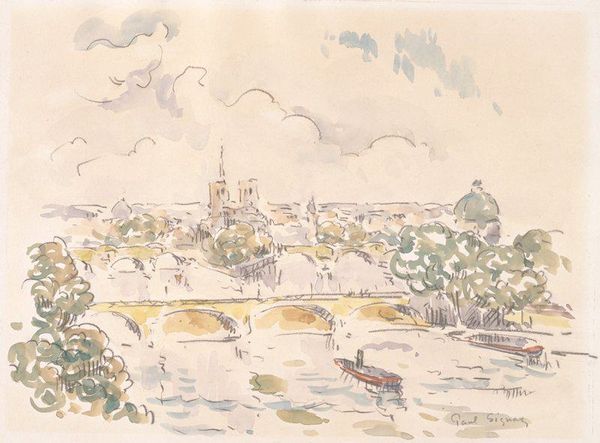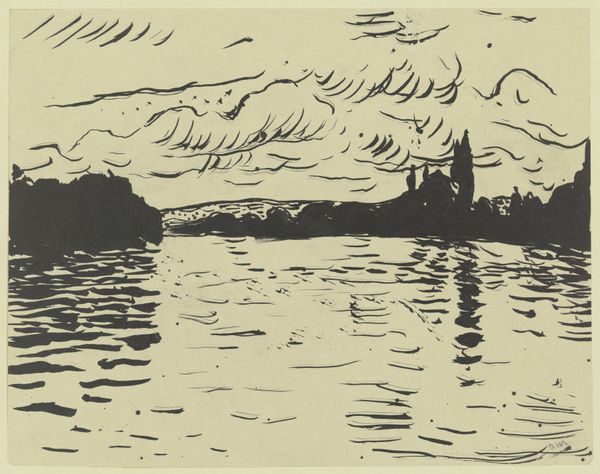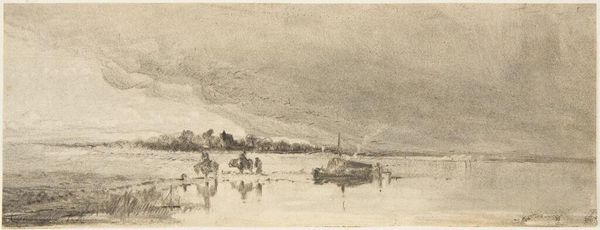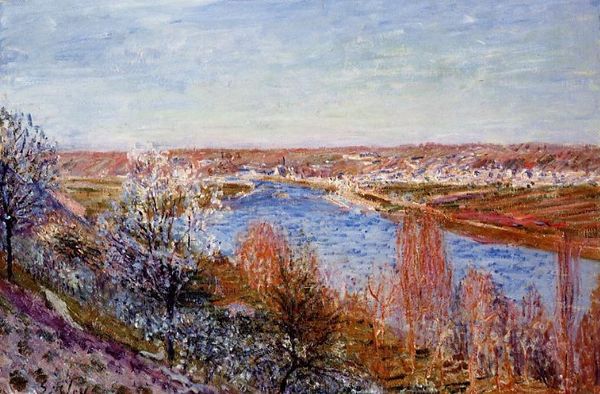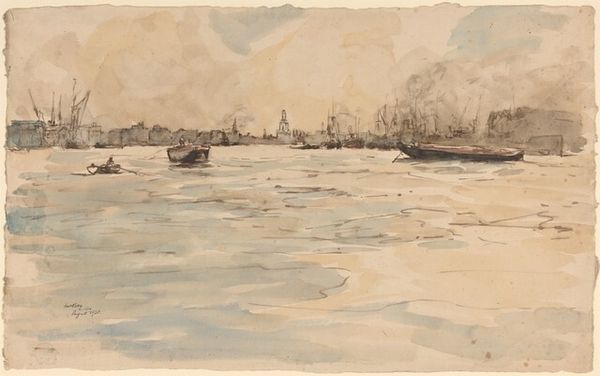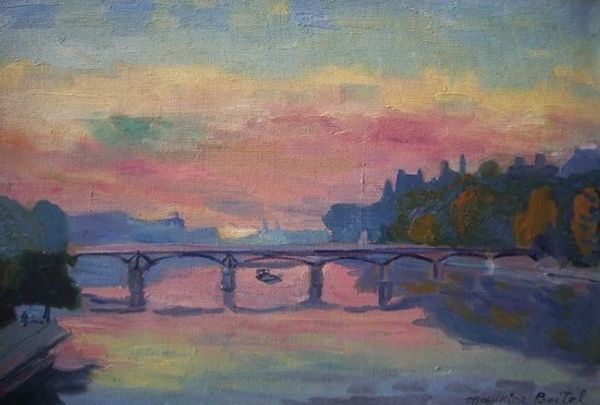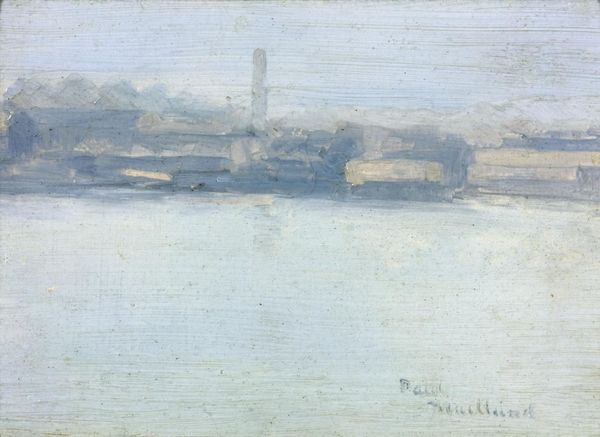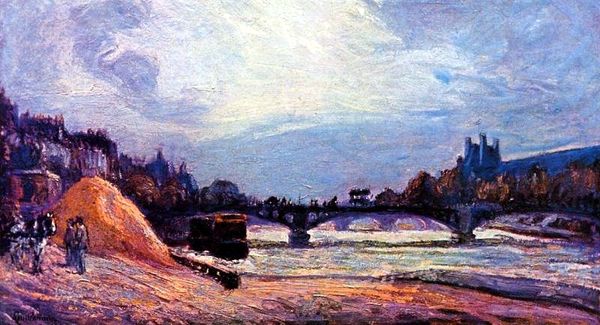
drawing, print, ink, woodcut
#
drawing
#
ink painting
# print
#
landscape
#
ink
#
woodcut
#
russian-avant-garde
#
cityscape
#
realism
Copyright: Anna Ostroumova-Lebedeva,Fair Use
Editor: This is Anna Ostroumova-Lebedeva's "Leningrad. View from Trinity Bridge," created in 1926 using ink and woodcut. It’s such a tranquil scene, almost dreamlike with those hazy, light blues and whites. What catches your eye most about this print? Curator: The cityscape is steeped in symbolic weight, you know? The very name "Leningrad" evokes a specific era, the Soviet period, yet we see the timeless beauty of the city represented. The bridge itself acts as a powerful symbol of connection, transition - linking the past with the present, maybe even hinting at the future the artist imagined for the city. Don't you feel a push and pull here between realism and the idealized potential of urban life? Editor: I do. I’m struck by the reflections in the water. They are almost more defined than the actual buildings, if that makes sense. Curator: Precisely! Water often signifies the unconscious, the unseen. Here, it magnifies the buildings, exaggerates them. Perhaps it points to the emotional investment Ostroumova-Lebedeva has in Leningrad – its image looms larger in her mind's eye than perhaps the reality held. Editor: So, the reflections are about the emotional connection to the city? Curator: Possibly. How the artist envisions it is just as critical, if not more so, than how it factually exists. Considering the context - a post-revolutionary Russia attempting to rebuild, to reinvent itself - it can be read as optimism and the hope of seeing it endure. Does it challenge what you previously believed about art of that time period? Editor: Absolutely. It's so much more than just a picture of a city. I appreciate the undercurrent of symbolism that brings history, psychology and emotion together in such a subtle way. Curator: And remember, it is through art that we negotiate cultural memory. The symbolic bridges help the past become part of our understanding of the present.
Comments
No comments
Be the first to comment and join the conversation on the ultimate creative platform.
